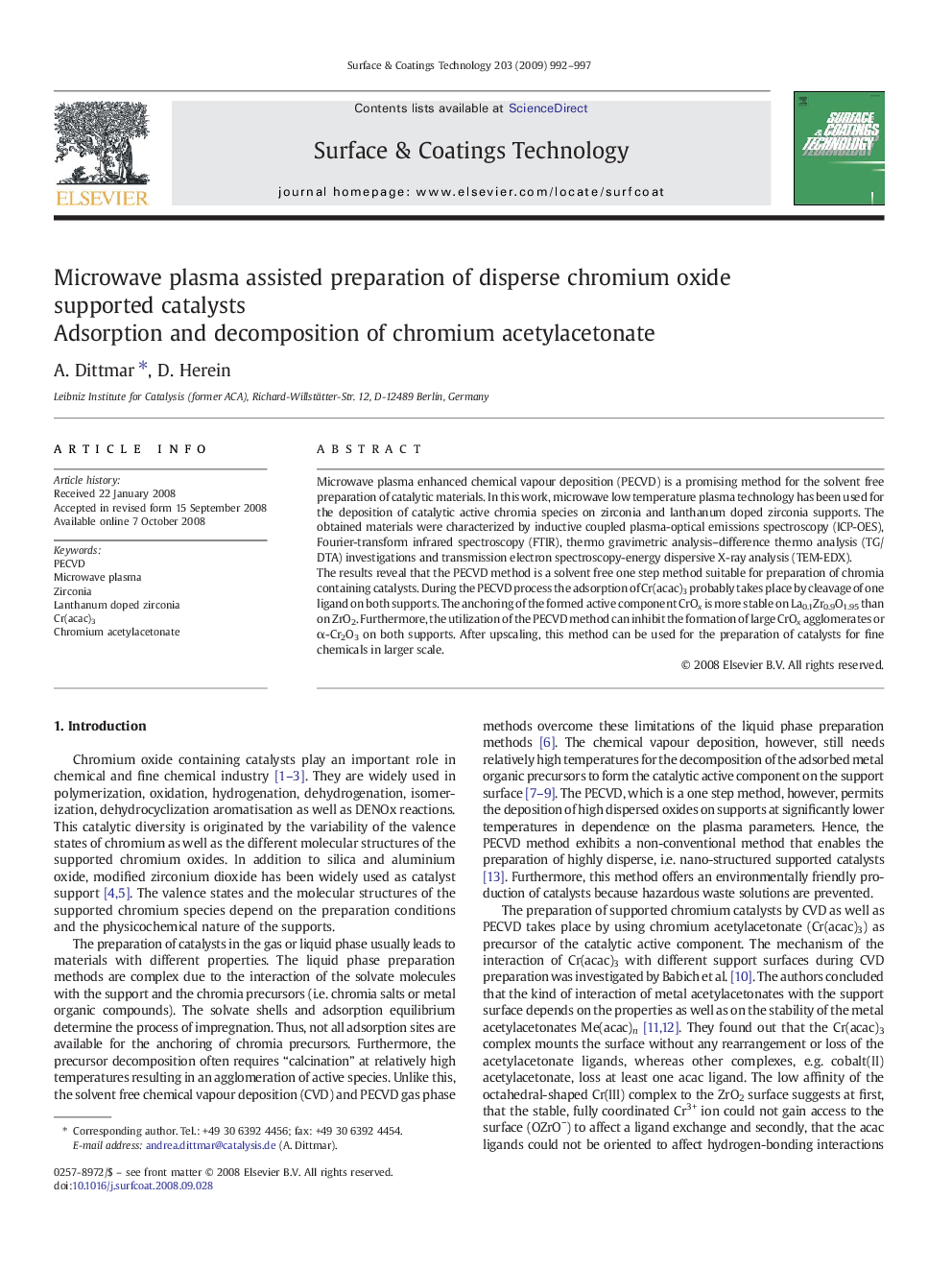| Article ID | Journal | Published Year | Pages | File Type |
|---|---|---|---|---|
| 1660405 | Surface and Coatings Technology | 2009 | 6 Pages |
Microwave plasma enhanced chemical vapour deposition (PECVD) is a promising method for the solvent free preparation of catalytic materials. In this work, microwave low temperature plasma technology has been used for the deposition of catalytic active chromia species on zirconia and lanthanum doped zirconia supports. The obtained materials were characterized by inductive coupled plasma-optical emissions spectroscopy (ICP-OES), Fourier-transform infrared spectroscopy (FTIR), thermo gravimetric analysis–difference thermo analysis (TG/DTA) investigations and transmission electron spectroscopy-energy dispersive X-ray analysis (TEM-EDX).The results reveal that the PECVD method is a solvent free one step method suitable for preparation of chromia containing catalysts. During the PECVD process the adsorption of Cr(acac)3 probably takes place by cleavage of one ligand on both supports. The anchoring of the formed active component CrOx is more stable on La0.1Zr0.9O1.95 than on ZrO2. Furthermore, the utilization of the PECVD method can inhibit the formation of large CrOx agglomerates or α-Cr2O3 on both supports. After upscaling, this method can be used for the preparation of catalysts for fine chemicals in larger scale.
